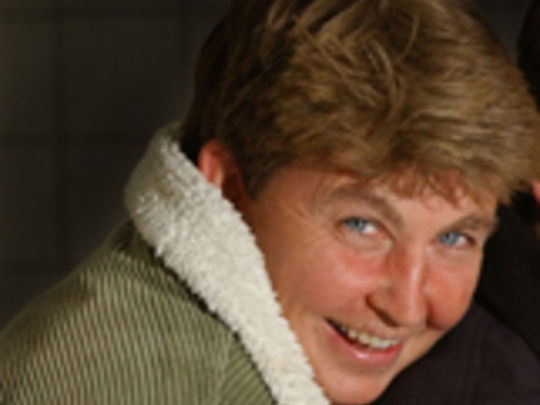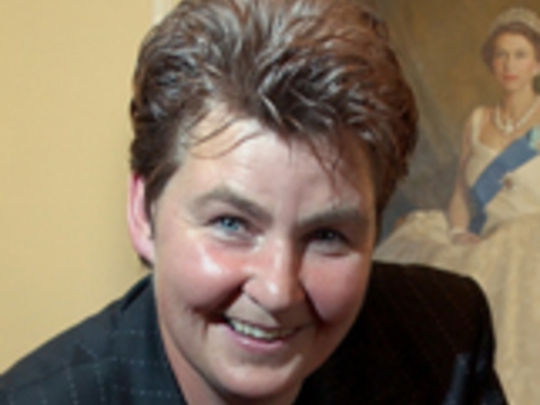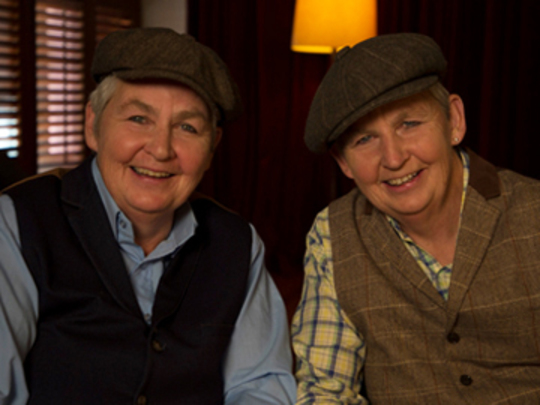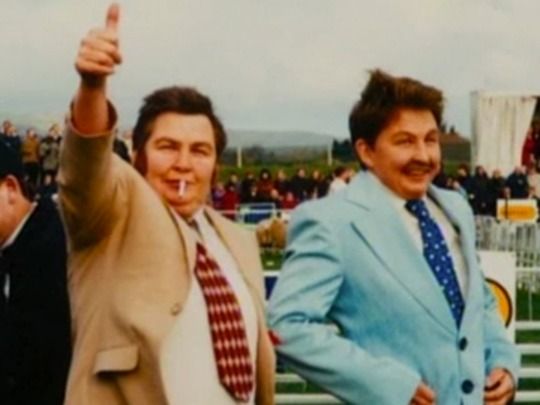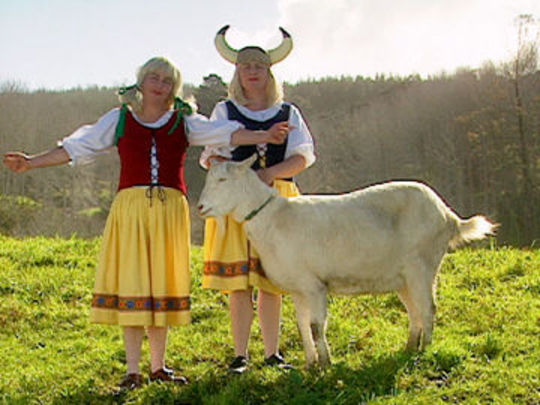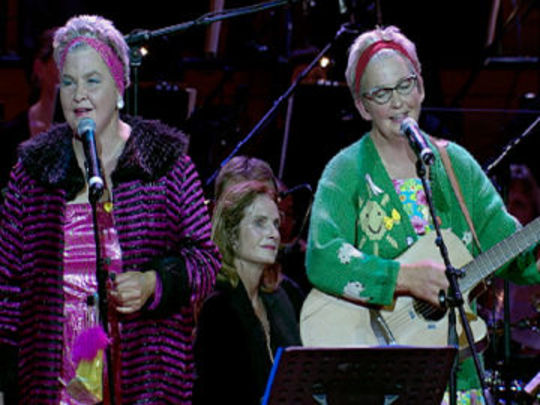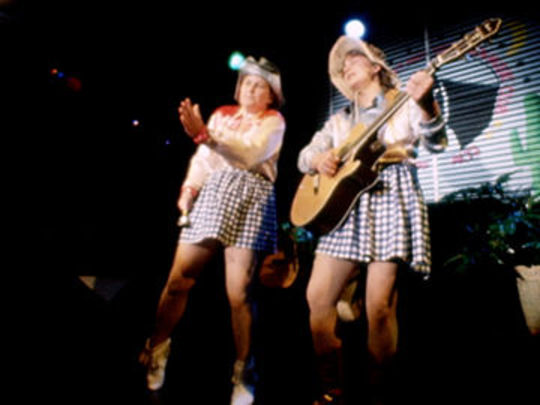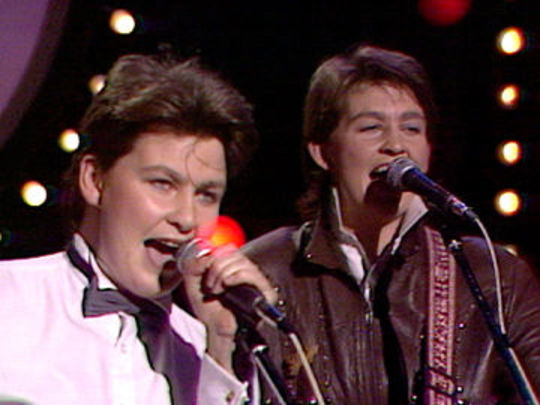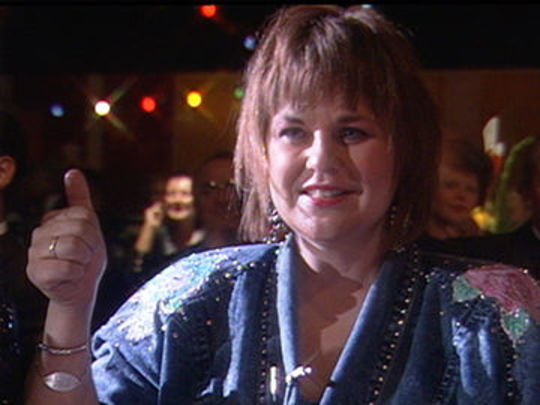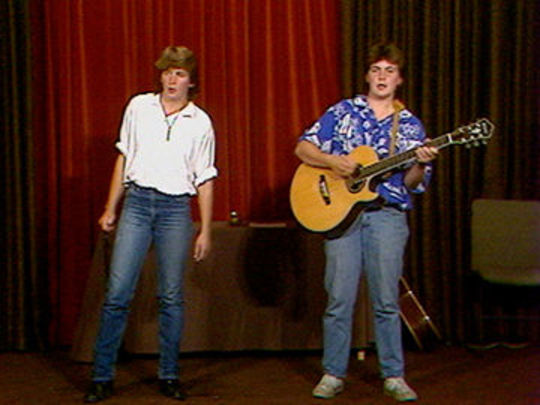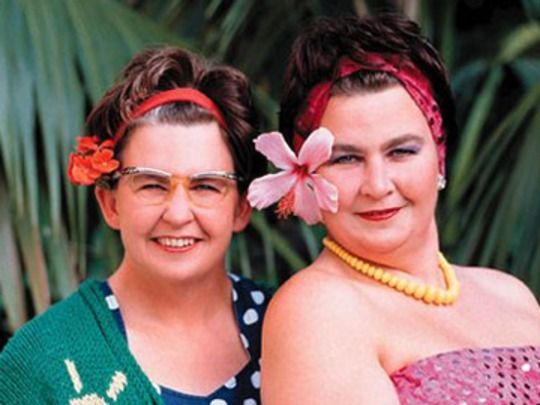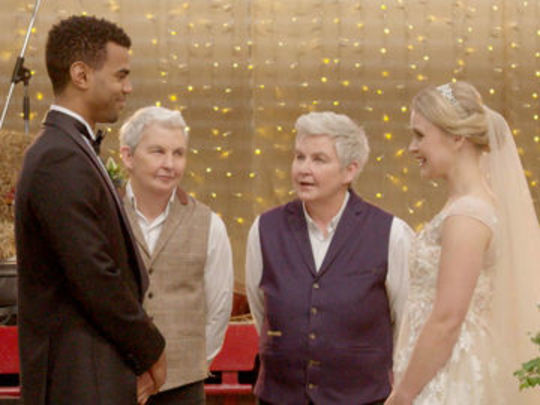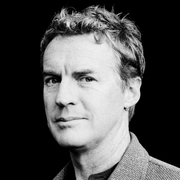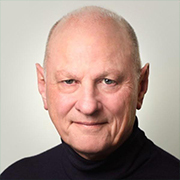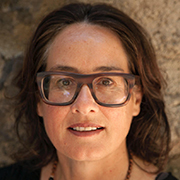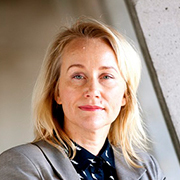The Topp Twins Collection
This collection has five backgrounds:
Double Trouble
Film and television weren’t much on our minds in the early eighties. It was all about live performance; sort of mass conversion events, best experienced with a lot of other humans. In 1980 there was a buzz about the Topp Twins. It happened pretty fast, although there was not a singular thread about them that made straight sense: twins, country singers, lesbians, with a guitar and a world-class yodel, busking on the corner of Queen and Darby Streets to pay for food and gas. Pumped with attitude, they called themselves Homemade Jam; connected to the women’s movement, from the Waikato, something about being in the army. What was this?
In November 1980 friends urged me to see these Topp Twins at a lunchtime show at Auckland Technical Institute. The cafeteria was Seddon Tech era; the enthusiasm of the audience soon drowned out the clattering din of cutlery. At the time I was a year into my term as chairperson of the NZ Students’ Arts Council, a legendary touring arts catalyst. We were programming for 1981, and were looking for an act to pair on a national tour with Auckland political comedy duo Slick Stage — Peta Rutter and Peter Rowell. Immediately after the show I introduced myself to the Topp Twins, congratulated them, and offered them a campus Orientation tour on the spot. They said yes. It was a three-minute discussion, details to be worked out.

Slick Stage and the Topp Twins, after a January 1981 rehearsal. From left Peter Rowell, Peta Rutter, Lynda Topp, Jools Topp.
NZSAC ran two national Orientation tours. Australian Jean Paul-Bell was booked for the headline tour – audacious programming by my colleagues. Putting a comic mime in front of thousands of beery students proved sensational. Slick Stage and the twins prepared for their show in a vacant office building in Grey Lynn, and performed an out-of-town opening in the hospitable climes of the Kumara Shed, north of Katikati. From the moment the two duos began their 30-show tour from Dunedin to Auckland, it was clear we had a second barnstormer on the road.
From the get-go the Twins found their comic voices, probably to their surprise. In costume they became characters, and they would go on to create multiple personas over the next four decades of live performance, television and film. Their musical roots came from Australian and American country singers and yodelers, but their comedy seemed to spring from BBC character comedies like The Two Ronnies. They were like a lesbian version of The Everly Brothers with a dose of Benny Hill. Lynda: “It’s all about hip movements!” There were moments when Jools, Lynda and entire audiences were convulsed with laughter at their outrageous freedom to invent...to be spontaneous, be silly, be happy.

But we were five years into Muldoon and relations between old and new generations were polarised. With the 1981 Springbok tour coming, people were reaching for their helmets. Half of the country was mad about rugby; the other half was mad about social justice. The goal of the movement was to free Nelson Mandela and to free a country from apartheid, which New Zealand was intrinsically supporting by hosting its rugby gods. The Topp Twins were a unifying and energising force for the social justice side with their presence, songs, and irresistible determination.

Brian Sweeney in 1981, when he chaired the NZ Students' Arts Council. Photo by Don Higgins
In 1982 the Topp Twins headlined their own NZSAC national Orientation tour. The itinerary branched out from campuses to public halls and theatres. A full two-hour show, with production values and honed spontaneity. Lynda getting people up on stage for a dance routine, Lynda going into the audience to interview. There were times Jools didn’t know what was happening, but was all “go for it sister.” Cheers to the students and students’ unions of Aotearoa for providing the circuit, and the opportunity.
In 1983 I set up my own arts and entertainment agency in Wellington, with the Topp Twins as my first clients. Together we got seriously down to business. For the next three years we went pretty much everywhere: every city, regional theatres, seasons and late nights in professional theatres, and dozens of country halls where most of the district would come along. Often the audience included groups that wouldn’t normally mix: farmers, miners and hippies for example. A five-centre tour of the West Coast concluded with a wild Saturday night in Blackball.
There were TV appearances – their debut on That’s Country was a big moment — playing opening act for a Split Enz tour, and numerous gigs in Wellington, where Muldoonism still had two years to run and there were multiple rights that our Parliament had to, and eventually, did address – including nuclear-free, Māori land rights, gay rights. The twins were visible and vocal leaders. With their rousing Kiwiness, they reassured the public of New Zealand that change was possible, positive, and indeed on its way.
My last Topp Twins assignment was in 1985, visiting theatre companies and performance spaces across Sydney to open a door to Australia. I’d take the smallest room in the city to guarantee a sellout season. Belvoir St Theatre in Surry Hills hosted us for a month, and their downstairs room delivered abundantly.
Barry Humphries was playing the Regent Theatre in Sydney at the same time, and fortuitously the shows were reviewed together in the major newspapers. Playing in the smallest theatre in town had the same effect as playing the biggest. Jools and Lynda met Humphries after a matinee show at the Regent. Barry had exquisite stagecraft, deeply observed characters — vile though some may have been — a caustic wit, and a raucous ability to transport an audience. I'd hazard a guess that a bit of DNA from Dame Edna and Sir Les Patterson found its way into the Topp characters. But only the good bits, because freedom and joy are at the heart of the Topp Twins legend. RIP Barry.

The tour crew on the Topp Twins' second Orientation tour in 1982: from left, Greg Fahey, Gisella Carr and Brian Sweeney.
After five years we took stock and recalibrated. After a pause, Greg Fahey, the original tour director of the first Topp Twins Students’ Arts Council tours, took up the reins with the Gypsy Caravan tour, and other excursions deep into heartland New Zealand. Since 1992 the professional management of the Topp Twins has been in the exemplary hands of Arani Cuthbert, founder of artist management company Diva Productions. Jools, Lynda and Arani have created award-winning primetime television shows, national and international tours, a formidable songwriting catalogue, and books.
In 2009 we reunited for the documentary film Untouchable Girls, which my partner Jane Vesty and I co-funded. Directed by Leanne Pooley, Untouchable Girls won the People’s Choice Documentary Award at the Toronto International Film Festival and 20+ other awards, and sold to Australia, North America, Netherlands, Japan and the United Kingdom. It was New Zealand’s highest-grossing documentary film for eight years (until it was surpassed by Chasing Great, a documentary about the greatest All Blacks captain, Richie McCaw).
The 40th anniversary tribute show for the Topp Twins at Auckland's Civic Theatre in November 2022 was also, to my mind, a tribute to everyone who has worked back stage, front of house, behind the camera, and on the road, making it happen.
I grew up in Morrinsville, a Waikato dairy town about 50 km from the Topp farm. The highlight of my 12 years there was when Tex Morton came to the Morrinsville War Memorial Hall one Friday night, with his one-man country singing, sharp-shooting, whip-cracking comic vaudeville show. Tex was a popular entertainer in North America in the 1950s — and here he was in my home town, with his go-everywhere brand of Antipodean entertainment. I thought of Tex again that moment at the Auckland Technical Institute cafeteria when I first saw the Topp Twins perform, and had the sense this could be the start of something consequential.
Dame Julie Topp and Dame Lynda Topp – the Topp Twins – I’ll love you forever. A ride of my life.
Brian Sweeney, with Jane Vesty, founded communications strategy consultancy SweeneyVesty in Wellington 1987 following earlier careers in the arts and entertainment.
